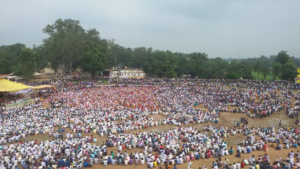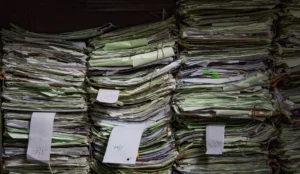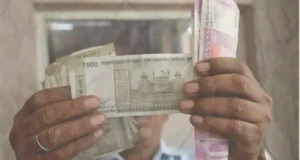

The Story of My Encounters With Truth: a Look at the Subordinate Judiciary
I recall a saying “some stories stay with us forever”. This proved to be true when I met one of the officials of a subordinate court in Bengal. The story he narrated shocked me. He told me about a case filed in the nearby district, where the court was functioning out of a leased property. Shockingly, the owner of the property filed a case for eviction of the court (his tenant) in that very same court. Perhaps one day the court will rule in favour of the owner, in which case that would be the last judgment of the court on that premises. This story highlights the deplorable conditions in which several of the subordinate courts in our country function.
I have been visting various courts in the country as a part of the research project by DAKSH to understand the causes and reasons for delays in judicial proceedings. My journey to one of the subordinate courts, is one that I will remember for years to come. I had to make my way from the city through jam packed traffic in order to reach the subordinate court. The vintage yellow ambassador taxis and old buses crowded the entire area, leaving no place for other vehicles to move during the mornings.
My first experience in the subordinate court I visited, was with a goat. It was tethered to a pole next to the temple, eating lush green grass, undisturbed and untroubled. The entire area was swamped with chaiwalas and typists chattering. The court premises resembled a street market, with children playing on the road, aloo dum and luchi being sold on every corner, with even some houses existing inside the court establishment. After walking through all of this chaos, one could then find a few court halls scattered around. My aim was to collect data on criminal cases pending before various Magistrates in the court. I was given a room where I could work on my laptop and carry out the research. It was an old accounts room with piles and piles of dusty records, a computer which never saw the light of day and lots of rats! The problem of rats was especially menacing. There were days when I used to fold my legs on the chair for an entire day to avoid the rats going about their business below. When I enquired about the rat menace, one of the guards chuckled and replied, “Saaar, they are domesticated rats. They don’t bite, they are quite friendly.” The problem only worsened when one morning the officials informed me that the only person I used to interact with and who helped me in getting cases had gotten dengue. The worrying part was that he used to work and sleep in the same room in which I was carrying out the research work. I never saw him in the court again during my visit.
The reason for pendency of cases cannot be divorced from the problem of infrastructure. In the court I visited, there was paucity of space for court rooms with no place to store records. Storing case records in good conditions is essential since these records must be sent to High Courts in the cases of appeals. Many a time, cases in the High Court get stuck because the lower court records are not kept in proper conditions or are misplaced. This paucity of space also leads to the lack of usage of available technology, since there is not much space to keep computers and servers.
The problem of pathetic infrastructure across lower courts is not a revelation. Working amongst the court officials for a month showed the unsympathetic work conditions of the subordinate judiciary. One cannot remedy pendency without remedying infrastructure. To hold the courts to the standards of “temples of justice,” their infrastructure must be improved too, for justice cannot be dealt in dust and mud.
The views expressed in this article are solely those of the author’s and they do not represent the views of DAKSH.

Arunav Kaul
RECENT ARTICLES


POLITICAL MANIFESTOS AND JUDICIAL REFORMS

Challenges in NCLT Filing Procedures: Advocates’ Perspectives

Beyond Revenue – Reimagining Court Fee As A Policy Tool For Judicial Administration

-
Rule of Law ProjectRule of Law Project
-
Access to Justice SurveyAccess to Justice Survey
-
BlogBlog
-
Contact UsContact Us
-
Statistics and ReportsStatistics and Reports
© 2021 DAKSH India. All rights reserved
Powered by Oy Media Solutions
Designed by GGWP Design
